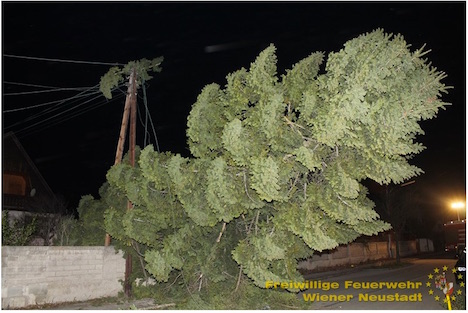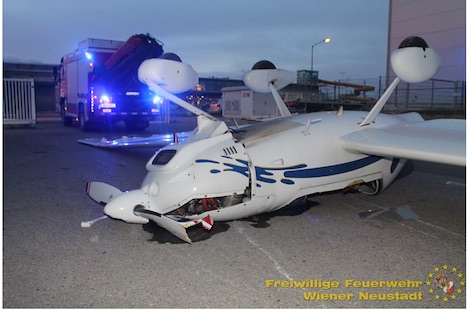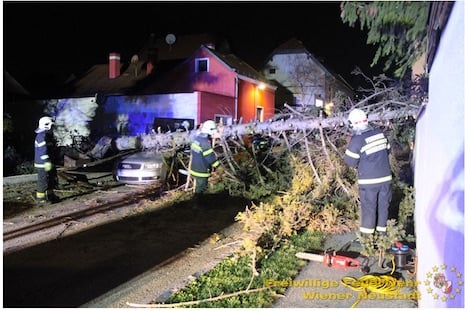Heavy squalls were recorded in Upper and Lower Austria, in Vienna, Burgenland and mountainous regions.
In Wiener Neustadt, winds reached hurricane force, with gusts of more than 130 km/h, causing fallen trees and damage to roofs, according to the Wiener Neustadt Volunteer Fire Department.
At least one of the trees brought down power lines, cutting off energy to more than 75 homes.

This tree disrupted power to more than 75 homes. Photo: Volunteer Fire Department of Wiener Neustadt
According to the UBIMET weather service, the stormy winds are expected to continue overnight on Monday, with expectations of gusts in some areas exceeding 100 km/h.
“From the Vienna area up into the Neunkirchen region, gale-force winds were recorded. The highest readings were in Wiener Neustadt with 130 km/h and Vienna/Unterlaa with 126 km/h”, said UBIMET meteorologist Josef Lukas.
“The strong winds will continue into the day, with gusts between 70 and 80 km/h,” he added.

A plane was damaged when flipped over by strong winds at a regional airport. Photo: Volunteer Fire Department of Wiener Neustadt
But the storm is not over yet.
“On Monday night, the winds will die down. They will increase again on Tuesday morning, specifically in Vienna and parts of Lower Austria again with heavy squalls of up to 100 km/h expected. In the southern Vienna Basin there is even a possibility of hurricane strength winds,” warned the meteorologist.
The weather is only expected to settle again by Wednesday.




 Please whitelist us to continue reading.
Please whitelist us to continue reading.
Member comments